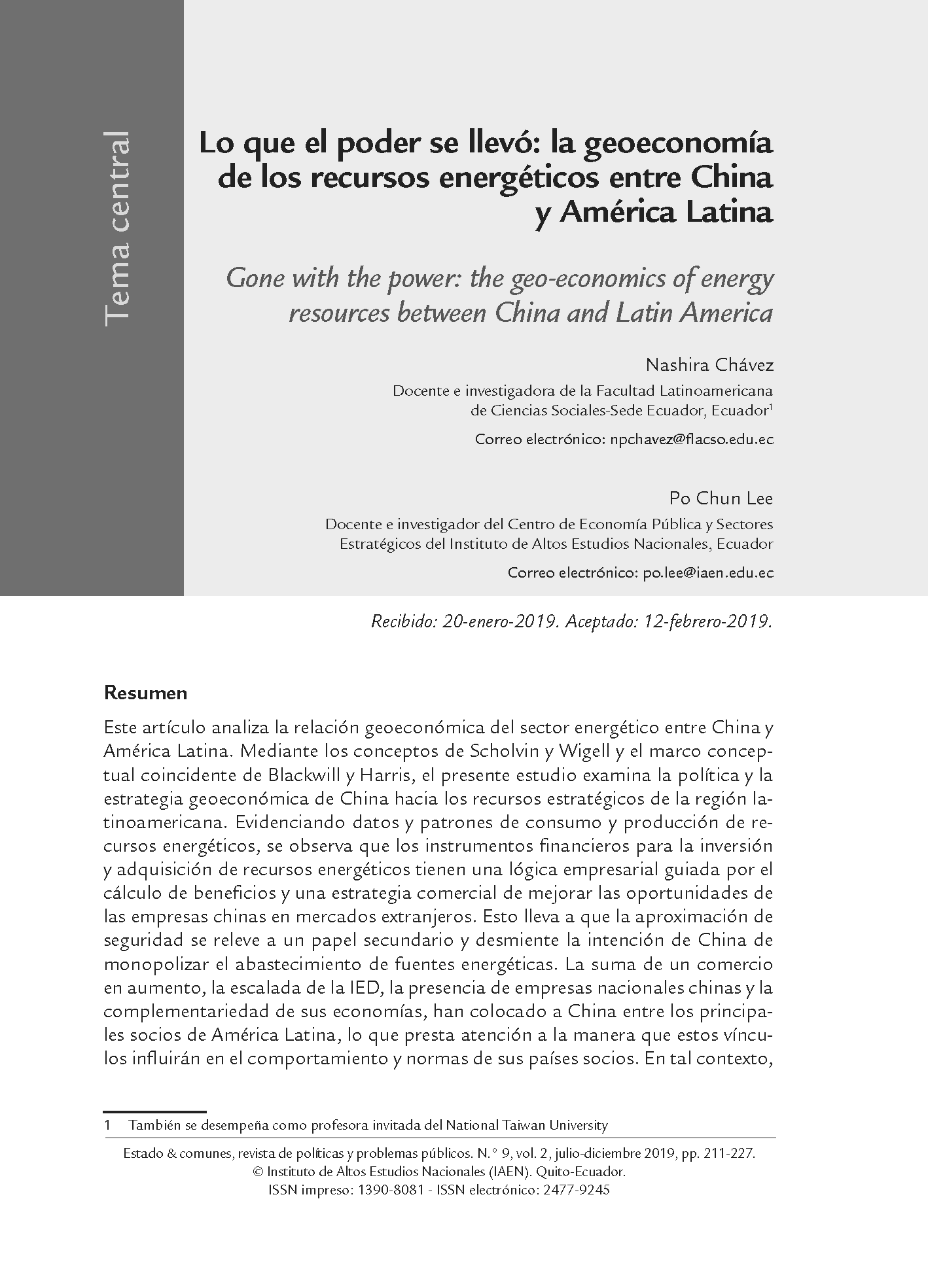Lo que el poder se llevó: la geoeconomía de los recursos energéticos entre China y América Latina
Main Article Content
Abstract
Este artículo analiza la relación geoeconómica del sector energético entre China y América Latina. Mediante los conceptos de Scholvin y Wigell y el marco conceptual coincidente de Blackwill y Harris, el presente estudio examina la política y la estrategia geoeconómica de China hacia los recursos estratégicos de la región latinoamericana. Evidenciando datos y patrones de consumo y producción de recursos energéticos, se observa que los instrumentos financieros para la inversión y adquisición de recursos energéticos tienen una lógica empresarial guiada por el cálculo de beneficios y una estrategia comercial de mejorar las oportunidades de las empresas chinas en mercados extranjeros. Esto lleva a que la aproximación de seguridad se releve a un papel secundario y desmiente la intención de China de monopolizar el abastecimiento de fuentes energéticas. La suma de un comercio en aumento, la escalada de la IED, la presencia de empresas nacionales chinas y la complementariedad de sus economías, han colocado a China entre los principales socios de América Latina, lo que presta atención a la manera que estos vínculos influirán en el comportamiento y normas de sus países socios. En tal contexto, se reviste un gran interés por el aumento de la participación económica de China en una región considerada como la esfera de influencia de Estados Unidos.
















